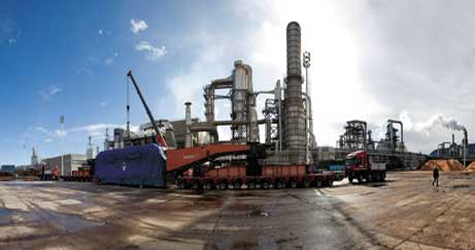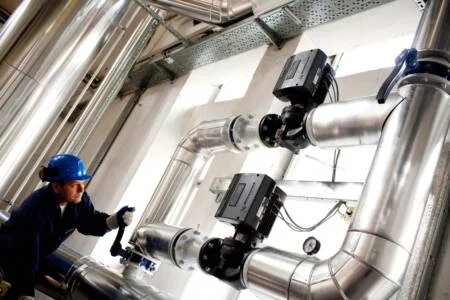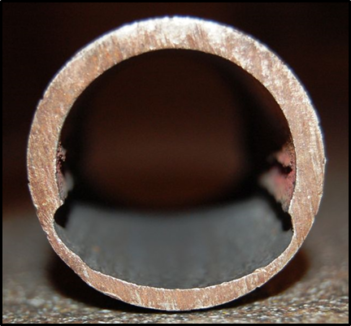* Go-ahead for 18.7 megawatts of decentralised power generation
* Second Joint Venture project of RWE Innogy Italia and Fri-El Green Power
RWE Innogy Italia today signed the agreement for the construction of the first biomass cogeneration plant in Sicily. The company will be the majority owner of the power plant and owns 90 per cent of the project shares together with its joint venture partner Fri-El Green Power. The remaining 10 per cent are held by the Roman company Infrastrutture e Gestioni S.p.A.. From a present planning perspective, the work for the construction of the biomass plant is to begin before the end of this year. Commissioning is due late in 2012. The biomass cogeneration plant has a capacity of 18.7 megawatts and is designed for a power generation output of 128,000 megawatt-hours. This is enough to supply about 30,000 residential households with electricity per year. The investment volume amounts to € 61 million.
Fritz Vahrenholt, Chief Executive Officer of RWE Innogy: ”Europe will not achieve its climate targets without biomass. This is why RWE Innogy pursues an integrated biomass strategy across the entire value chain ranging from plantations to pelletising of fresh wood onto the construction and operation of the cogeneration plants. In Germany we are already among the leaders in this sector. Our first plant in Italy is an important step for the continued internationalisation of our biomass business.”
For Stephan Lohr, Chief Executive Officer of RWE Innogy Cogen GmbH, RWE Innogy’s subsidiary for biomass, it is very important that the scheme is compatible with the specific conditions on site: “The integrated supply concept provides for the use of local biomass for decentralised energy production and a close cooperation with the Italian partners. Enna is the ideal location for this.” Long-term agreements are already in place for the supply of wood from the regional eucalyptus tree plantations with over 20,000 hectares. Moreover, nearby woodlands and unused agricultural areas offer various options for biomass production.
Currently, renewable energies contribute to the Italian electricity generation with 6,8 per cent. This value shall increase up to 17 per cent by 2020. In Italy electricity generation from renewables is primarily supported through a “green certificate” system. Electricity providers are obliged to offer a certain percentage of energy through renewable schemes. In future, they can be free of this obligation by buying-in green certificates.
Source: REW Innogy
Share your industry press now!
Are you a PR agency or sustainability-focused organization? Join the World of Renewables network FREE today and gain exclusive access to our platform to promote your business, share the latest industry news, and connect with a global audience of 700,000+ renewable energy professionals.
Register Now to start posting your updates and showcase your expertise to a highly engaged, environmentally-conscious community.
Find out more about our Content Partnership Programs.*2024 AWARD WINNER* Websites & Mobile Sites, Webby Winner, Peoples Voice 2024




















1 Comment
Real World-wide Renewables — Energy and Food:
I'm not trying (maybe I am) to be a "know-it-all" as I've been accused of being in the past, but it's difficult for those who do not live and worked in semi-tropical and tropical areas to appreciate what can be done with biomass and CFR's methanogenic anaerobic fermentation, MAF, to produce — literally — a significant fraction of the total current consumption of energy — renewably — along with sufficient, nitrogen and renewable carbon based — soil amendment-soil biologically augmented — organic fertilizer.
Two billion acres — sounds a great deal — of agricultural land — but the United States total area: 3,537,441 square miles — a bit more than two billion acres — yes mountains and lakes and so on — and South America is twice that size. Through in Central America and parts of Africa and Asia and we'll start there to find our two billion.
The biomass types of interest are giant, perennial legumes — thus not needing nitrogen together with biologically based fertilizer that is derived from the co-product of MAF.
On an annual basis, each acre is capable of producing 15 dry-tons of biomass that can be converted thru MAF to a net (after internal consumption) 100 MCF of renewable natural gas, methane — 100 million BTU's. Two billion acres would produce 200 quad per year and from Wikipedia: The global primary energy production in 2004 was 446 Quad — OK we're 1/2 way on the 2004 basis — for what's that worth in the future — combine this with conservation, distributed energy systems, other renewable resources — and maybe — but like Rome — won't be done in a day — but certainly — if started now — 20 years would probably be enough.
Using leucaena, as an example of an anaerobic fermentation feedstock — does not provide the 'best' of 'best' as a source of energy.
What appears to be the best, yield-wise, by far is moringa — facts, in general attached and below. I've seen the Nicaraguan plantings — the stuff is wonderful, having many uses. Yields, with adequate water supply, can be a least 4 times that of leucaena — the 2 billion acres would then potentially produce 800 quads per year — probably a significant fraction of the known non-renewable petroleum — produced annually.
Leucaena is planted using seeds that are easily obtained so that conventional seeding methods can be used. Moringa works best with tissue derived vegetative planting and cost at least 4 times more to establish — as a perennial, planting costs are essentially one-time.
Sorry my "renewable" message stopped on the issue of land use — South America Land surface 4.416768e+9 acres or — or just 1/2 the land area of South America could be used to produce twice the total energy used in world-wide in 2006. World-wide — enough appropriate land is available — and with CFR's technology, not only without affecting food production — but increasing food quality and quantity.
The other positives — CO2 consumed, not generated — water turned over, not contaminated — air particulates, knocked down — and the highest efficiency energy source, renewable natural gas, made available and so-on and so-on.
Where are the negatives? — greedy farmers — extortion and other negatives taken by governmental units — developers not under control — environmentalists not understanding that the technology benefits the environment and so-on.
I know this is but an outline — I'll be glad to send PDF's covering some background on the "800 quad solution" — just takes more time to read — but they are convincing and not based on activities by CFR.
**** Glick
BS, Chemistry, UofI, 1951
PhD Chemistry UCLA, 1954 —
37 years Professor — Physical Chemistry — 3y Penn State — 34y Florida State
http://www.pipeline.com/~dglickd/CFR.pdf